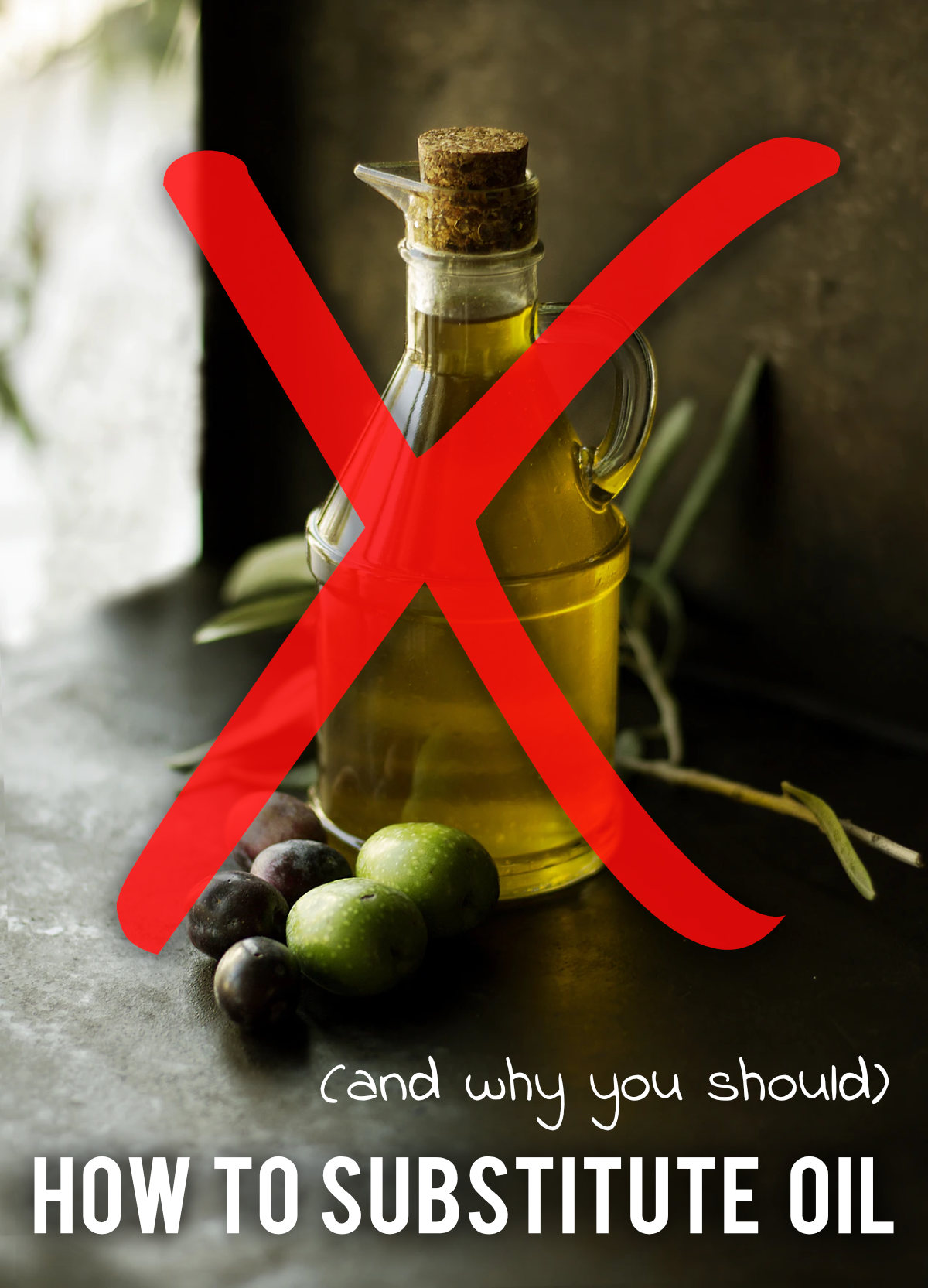
Every year, I try to learn more about nutrition and update my own diet to apply what I have discovered. Oil has been one of the big areas of improvement in my own cooking. Five years ago, my approach to oil was like, “I know oil isn’t very healthy, but a little in moderation is okay.” and a lot of my recipes from back in the day have ingredients such as a tablespoon of vegetable oil or even 1/4 cup of coconut oil (!) in some baked goods and desserts.
Today, my thinking and understanding of the research has evolved to the point where I basically avoid all oils, nearly all the time in my own cooking. In fact, other than an old jar of coconut oil that I rarely use, I don’t even have oil in my kitchen.
I find my previous uses of oil to be unacceptable. I may even go back to a few of my more popular old recipes and “remaster” them to be made without oil. But in the meantime, I felt like it was my responsibility to write this article that shows you how to take a recipe with oil (including mine) and rebuild it by substituting the right oil-free ingredients that get you as close to the original as possible.
This is a challenge because (as we will see) the uses of oil are numerous and pervasive, so let’s start with a little background to understand why oil is a problem and why it’s used so frequently. Then, we’ll dig into specific techniques and hacks that can help you replace oil in virtually any recipe.
The Problems with Oil
First, why? What is the problem with oil? Why do I now consider it to be unsafe and unhealthy even in moderation? What caused me to change?
There is a lot of conflicting noise on the effects of oil. Many nutritionists point to data that says that olive oil is actually good for you, but these studies are often flawed because they compare various types of fat against each other rather than simply oil vs no oil. Notice how the FDA words their recommendation (emphasis mine):
Supportive but not conclusive scientific evidence suggests that daily consumption of about 1½ tablespoons (20 grams) of oils containing high levels of oleic acid, when replaced for fats and oils higher in saturated fat, may reduce the risk of coronary heart disease. To achieve this possible benefit, oleic acid-containing oils should not increase the total number of calories you eat in a day.
In other words, if you replace your daily butter with olive oil instead, you MAY get some benefits! Well, duh! Just because something is better than butter doesn’t mean it is good for you!
Ultimately, oil has NUMEROUS health issues, such as: increasing inflammation, increasing risk of cardiovascular disease, increasing risk of type-2 diabetes, raising cholesterol and triglycerides, and being the most calorie dense “food” on the planet (240 calories in 2 tablespoons!).
Going deep enough to back up those claims is beyond the scope of this article, but if you’d like to do that, the following resources will give you a more rigorous scientific look at the subject:
- Olive Oil and Artery Function (NutritionFacts.org)
- Olive Oil Vs. Nuts (NutritionFacts.org)
- What’s Wrong with Olive Oil? (Pritikin)
- Is Oil Healthy? (Esselstyn)
- How to Lose Weight Without Losing Your Mind (Doug Lisle)
Why Oil is Everywhere (Biology and Chemistry)
Oil is everywhere. It’s hard to find any packaged food, restaurant meal, or even at-home recipe that doesn’t contain oil. Why? It comes down to both biology and chemistry…
On the biology front, Michael Moss in his incredible book Salt, Sugar, Fat, explains how the processed food industry uses those three nutrients to control our tastebuds and create irresistible, addictive foods.
We were designed to crave fatty foods, and since oil is pure 100% fat by definition, oil is one of the most effective tools that food scientist can use to make things taste great and get us hooked.
What’s incredible about the combination of salt, sugar, and fat is that scientists can omit one and then boost the others to compensate. So, in our current low-carb craze, they can drop the carbs/sugar and simply increase the fat and salt to keep addictiveness at a maximum.
Think of the most addictive unhealthy foods and they have large amounts of Salt, Sugar, and Fat (think orange chicken fried in oil and coated in a salty & sugary sauce). Or, they omit one and have even higher amounts of the other two (think potato chips with no sugar but ridiculous fat and salt).
The other reason oil is everywhere is about chemistry. As we will see repeatedly in the rest of this article, oil is a magical ingredient. There’s no other edible liquid you can heat to 400º to instantly cook food and also create a beautiful crispy texture… Oils can help processed food stay moist and shelf-stable for years… Saturated oils in particular can create some pretty unique textures that aren’t otherwise possible.
In other words: oils are a powerful tool in the food scientist’s toolbox that can be used to achieve a variety of goals – in addition to also making the food taste great. It’s a win-win for them, but a loss for our health.
Put the biology + chemistry together and it’s obvious how you end up with the ingredients in a Hostess cupcake. It has 250mg of sodium, 19g of added sugar, and FOUR different kinds of oil/fat (palm oil, hydrogenated tallow, cottonseed oil, and sunflower oil) which are engineered to provide the fat we crave, but also the texture/stability needed from processed food.
It’s important to understand all of this because knowledge is the first step towards replacing oils in our cooking. Only by understanding what the oil is actually doing can we begin to create an oil-free substitution, right?
Let’s put this information into practice now. We can break it down into the two primary ways you’ll encounter oil in recipes: oils added to baked goods, and oils used to actually cook / fry food:
How to Substitute Oil in Baking
Oil is used in baked goods for three primary reasons: flavor, moisture, and texture. Let me quickly explain each of these functions…
Flavor: We just explored this. Adding oil to baked goods increases the fat content, which makes people happy.
Moisture: Compare a cake with oil to one without oil and the oily cake will be luxurious and soft; the one without will taste like stale bread.
Texture: This is especially important with saturated fat (coconut oil, butter) which has a special property: it is solid at room temperature but melts when heated. This enables saturated fat to do magical things in baked goods. Example: Mix cold butter into puff pastry dough and the pastry cooks before the tiny bits of butter can melt, leaving little pockets of air. The crust becomes light and flaky.
Using that information, what can we do to replace oil in baked goods and end up with similar flavor, moisture, and texture?
Texture is hard because nothing but saturated fat behaves like saturated fat, unfortunately. This means things like flaky pastry are practically impossible. However, flavor and moisture are still very much in play!
When you run into a recipe for baked goods that calls for oil, go through these options and pick the substitution that best matches your situation:
Option 1: Skip the Oil (Easy Way Out)
If a recipe calls for a tablespoon of oil across an entire batch of 12 muffins, for example, you can feel pretty confident that it’s not adding much and you may be able to completely omit the oil with no consequences. However, if the recipe has something like a CUP of oil, then we need more aggressive solutions…
Option 2: Fruit Purees (Meh)
The most common way to replace oil in baked goods is by using applesauce or mashed banana. Other fruit purees work too, but most of them add more flavor – apple and banana are neutral enough to not overpower other flavors. This is a fine option, but all it really does is add moisture back into the recipe so that your cake isn’t so dry that you choke on it… As far as flavor and texture, it doesn’t do much to make the dish palatable. For that, I have something much more interesting…
Option 3: Pureed Fruit + Nut Butter + Dates (My Secret Weapon)
When making baked goods like cakes, rolls, muffins, etc. I like to take things a step further than just a fruit puree. I typically start with the fruit puree, but then add nut butter and blended dates as well. Why? If you remember our triad, this brings some healthy fat back into the mix from the nut butter and also boosts the sweetness to compensate for the reduction in fat.
Typically, I’ll make a 1:1 replacement by starting with 2-4 tablespoons of nut butter, 1-3 dates, and then fill out the rest of the measure with either applesauce or mashed banana. For example: 1/2 cup vegetable oil might be replaced with 2 tablespoons almond butter, 2 dates, and however much applesauce is needed to round out the half cup.
The dates do need to be blended, but here’s how to handle that: in most recipes you add the oil to the wet ingredients like milk, vanilla, etc. So instead of adding them to a bowl, add all the wet ingredients to a blender along with the puree + almond + date mixture and blend until smooth, then continue on with the recipe.
In most cases, the end result is more moist and sweet, with a better mouthfeel since it retains a hint of the fat that the oil would have brought to the table. Try it. I think you’ll be surprised at how well it works.
How to Substitute Oil in Frying / Sautéing
Beyond baked goods, the primary use of oil is to fry or sautéed dishes. Here, the oil has two main functions: to heat/cook the food and to add flavor.
Just like before, fat adds flavor and makes the food taste better. However, the biggest reason for using fat in cooking is to create a super-hot liquid so that the food 1) cooks fast, 2) gets all crispy and delicious, and 3) doesn’t stick to the pan.
Once again, let’s look at all the options you have to recreate those effects without oil:
Sauté Veggies: Use Water
Just use water. Seriously, it’s that simple. When a recipe tells you to sauté the [onions / tomatoes / broccoli / whatever] in a tablespoon of olive oil, just use a 1:1 replacement of water. The end result will be nearly identical.
Deep Frying: Air Fry or Bake
Deep frying is a brilliant invention. Because you can heat oil to 400+ degrees and this oil completely coats the surface of the food you put into it, it’s a fast and powerful cooking method. Unfortunately, some of that oil ends up on the food (and your arteries).
Unlike sautéing, it’s not as simple as just using water. Water boils at 212º which is far lower than the 400+ smoke point of frying oil and your water-soluble food will just fall apart into the water at those temperatures.
Instead, an air fryer is your best option! Air friers circulate superheated air to create a similar effect to the superheated oil of a deep frier. It’s not perfect, but it works quite well. I use my air fryer at least 2-3 times a week to make fried tofu, crispy hash browns, or oil-free french fries. It’s a worthwhile investment and I would recommend one if you can find the counter space.
If you don’t have an air frier, baking also works quite well for most deep fried foods. Simply preheat your oven to a pretty high temperature and bake the french fries / tofu / whatever until crispy.
Pan Fry Without Oil
Pan frying is in-between sautéing and deep frying. A recipe might instruct to heat 2 tablespoons of oil and sear each side for 5 minutes, for example It is important to recognize why you use oil in pan frying. Most often, it is to prevent sticking (in addition to adding tasty fat and crispy texture).
The best solution to pan frying is to omit the oil and use a nice non-stick pan (perhaps ceramic or one of the copper ones if you’re worried about the toxicity of teflon). Or, if you have enough experience to know that something definitely won’t stick (i.e. most veggies), you can simply pan fry in water instead of oil.
Case Studies Using My Recipes
As mentioned, some of my older recipes do use oil, so let me show you how I would remake those today using the guidelines outlined above.
Cornbread Muffins
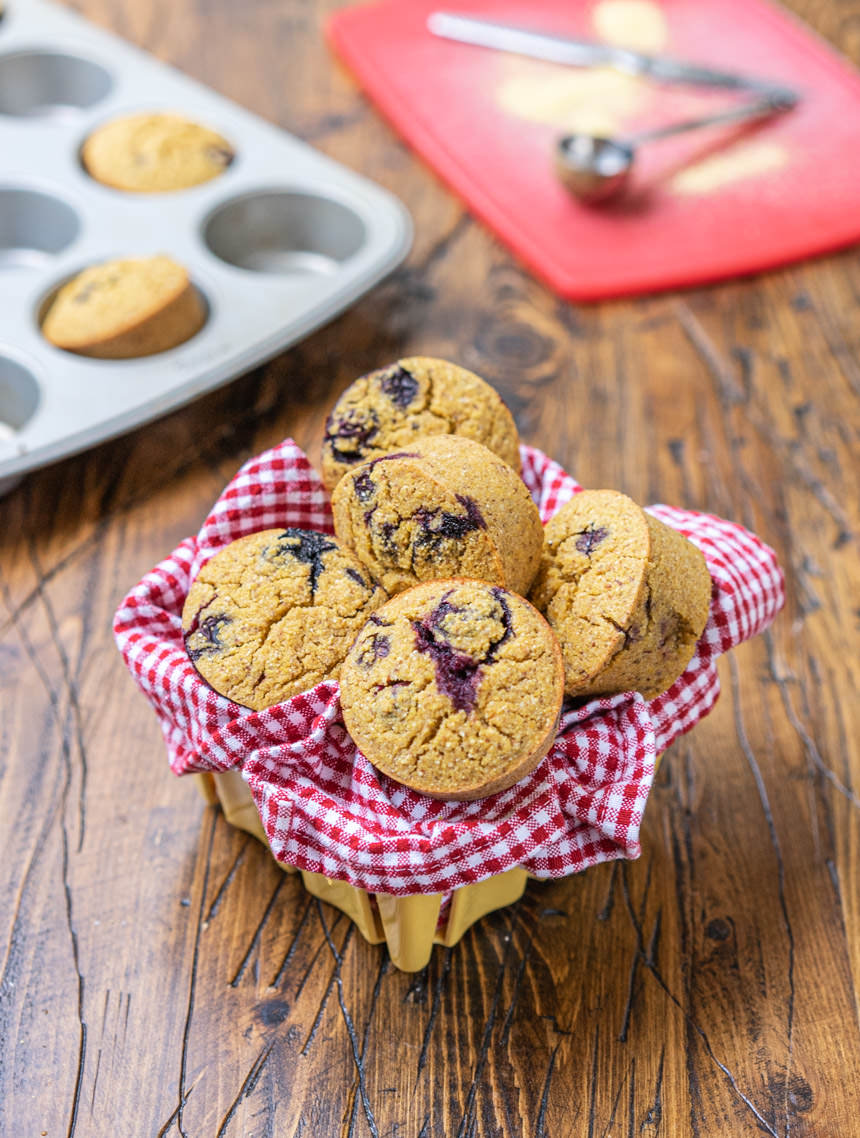
This is my favorite example because I actually did remake these. Originally, my strawberry cornbread muffins had 1/4 cup canola oil (!) and 1/4 cup sugar. In a new blueberry cornbread muffins recipe, I omitted both the oil and the sugar by using something similar to my “secret weapon” technique above: dates and almond butter blended into the almond milk (no applesauce needed here). I love this example because the oil-free blueberry muffins are absolutely a better, tastier recipe.
One of my first and most popular recipes, this one includes a tablespoon of coconut oil across 6 pancakes, which makes it a good candidate for option 1: skip it. Here, you can safely omit the oil and no one would ever know. In addition, the recipe steps call for a dab of vegetable oil to prevent sticking. We discussed this as well. If you’re using a non-stick pan at high heat, you should be able to get by without sticking. (Yes, I see that these are also drenched in maple syrup, but let’s work on one problem at a time, okay? 🙂 )
Here we have 1 tablespoon of vegetable oil which is used to sauté the onions. Sounds familiar, yes? See the “sauté veggies without oil” section. Simply cook those onions in water and you’ll never notice a difference.
—
Ultimately, substituting oil is a very case-specific kind of thing. There is no one-size-fits-all formula to substitute oil because its uses are so diverse and dependent on the specific recipe. That’s why I wanted to go deep enough in this article to share the basics of how/why oil is used, and give various suggestions to get you started. When substituting oil, best approach is always to ask yourself, “what is the oil doing in this recipe and what can I do to best recreate that effect?”
If you have any questions or additional oil-free tips, feel free to leave them in the comments below!

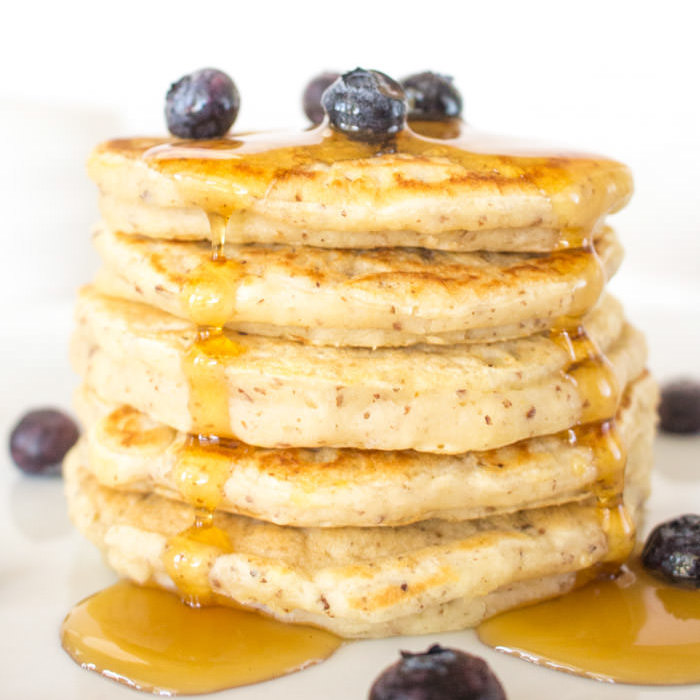
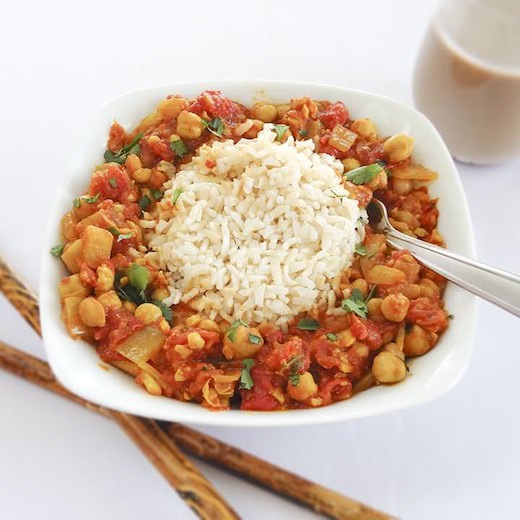
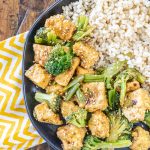
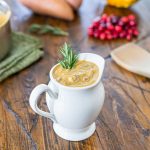

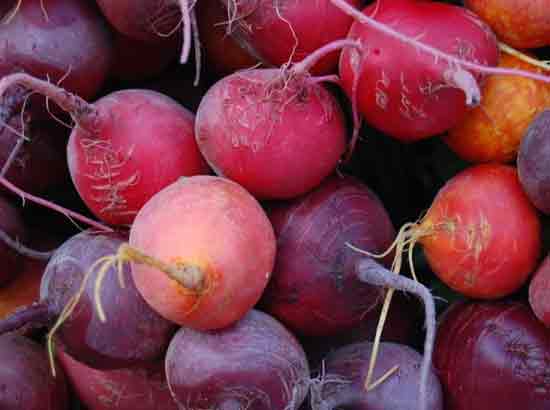

Great article. I know how bad oil is for you, and I have struggled a little with recipes trying to make them taste good without the oil. Your combination is something I never thought of and will try it as soon as I can. Thank you!
Thanks, Evelyn! I’m glad to hear that it was helpful and I hope my combo works well for you 🙂
Hi Andrew, Thank you for the helpful article. Do you know where I struggle the most with oil? Salad dressing. I grew up with olive oil and red wine vinegar on our salads every night. I still love it. Have you found good dressings that omit oil?
Hi Cathleen, ah that’s a really good point! It’s been so long since I’ve made an oil-based dressing that I forgot about discussing that… I actually think this is a pretty easy one to solve, though. There are SO MANY great oil-free dressings you can make, you’ll never miss greasy salad leaves again 🙂 These are some of my favorites: https://oneingredientchef.com/salad-dressing-recipes/ – I particularly love making variations of that cashew-based ranch.
Substitute for oil in marinade?
That chickpea curry looks delicious! There’s nothing better, not even those desserts don’t tempt me as much. I will admit that I mostly use just olive oil in my cooking so I didn’t think about substituting oil since olive oil is just awesome. However, that combo of pureed fruit, nut butter, and dates sounds really delicious. The dates part won me over.